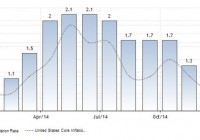Will Recent Strong Gains In The Greek ETF Last?
Although the Eurozone markets have perked up on the recent QE launch, Greece continues to trouble investors. The country is still deep in debt and its unemployment rate is a nagging concern. The malaise intensified in December 2014 when the Greek prime minister Antonis Samaras called snap elections in the wake of the political strife in Greece and lost it (read: Polls Indicate Syriza Win: More Pain for Greek ETF? ). Anti-austerity party Syriza came to power and kept on negotiating with the ECB to reach a debt-deal while reinforcing the cancellation of steep austerity measures. At the time of election, the leader of Syriza had vowed to cancel the austerities and quite expectedly, the intent to end austerities is flaring up a disagreement with the EU/IMF, lenders risking Greece’s stay in the Eurozone bloc. Last week, in an interview to Germany’s Stern magazine , Prime Minister Alexis Tsipras promised that Greece will be “a completely different country,” in the next six months. This positive vibe charged up the waning Greece ETF, at least for the time being, and pushed up Global X FTSE Greece 20 ETF (NYSEARCA: GREK ) by over 20% in the last five trading sessions (as of February 13, 2015), though the fund has added just 3% in the last one month. Shares of the country’s biggest bank National Bank of Greece S.A. (NYSE: NBG ) spiked on hopes that the country will retain its spot in the Euro bloc and get assistance from the ECB. The shares of NBG skyrocketed more than 45% in the last five trading sessions (as of February 13, 2015). Will the Uptrend Last? While the market was anticipating a positive outcome, the chances of a clean ending to this situation seem less likely. On February 16, dialogues between the foreign creditors and Athens failed as the latter proposed a six-month extension request of its international bailout package. If the parties fail to reach a unanimous decision by February 28, the date which connotes the expiry of the four-year bailout program offered to Greece, the country and its banks would crash into a cash crunch. The European Central Bank will decide on February 18 whether an emergency lending to the Greek banks, which definitely carry high interest rates, should be continued or not. Notably, the country is due for a hefty loan repayment in March, per Reuters. The Greece banks are already seeing signs of a capital flight at an expected rate of 2 billion euros ($2.27 billion) a week. Overall, Greece is in for trouble yet again and investors have nibbling doubts on this risky market. The Athens Stock Exchange General Index slipped more than 3.8% at the close on February 16 as drumbeats of losses were heard after the country failed to strike a debt deal (read: Greek ETF Faces Volatility on ECB Move ). Financials make up about 30% of GREK and is an important driver to the returns of the fund and the country’s current economic issues. The fund currently has a Zacks ETF Rank #3 (Hold). Bottom Line Investors should remember that despite the recent takeoff, GREK has been on a sale with a P/E (ttm) of 11 times versus the biggest European ETF Vanguard FTSE Europe ETF’s (NYSEARCA: VGK ) P/E of 15 times and the Euro zone powerhouse Germany’s iShares MSCI Germany’s (NYSEARCA: EWG ) 14 times of P/E (ttm) figure. So, a bit of a way up was probably long in arrears for GREK. This is more so given Greece’s Q3 2014 growth rate (0.7%) outstripped all other Eurozone countries (read: What is Behind the Greek ETF Surge? ). However, if the country fails to negotiate with its Eurozone associates, the rosy economy which Greece has just started to enjoy might wither away before being in full bloom. Moreover, a discord will find other Eurozone countries from Malta to Greece’s biggest creditor – Germany – in dire straits. So, all eyes should be now on the progression of the debt deal before one can surely predict the fate of the euro, Greece and the broader European market.

